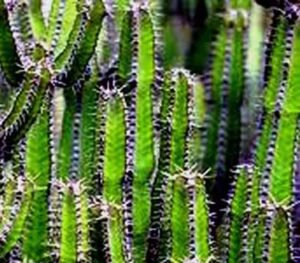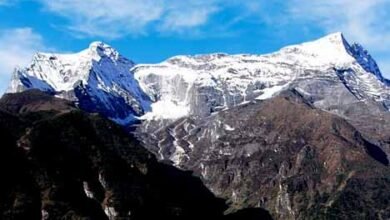
पौधों के कितने भाग होते हैं? = पोधें के मुख्यतः पांच भाग होते हैं (जड़, तना,पत्तियां, फूल और फल.
मूलरोम किसे कहते हैं? = पेड़ों की जड़ों की सतह पर जो रोएँ से दिखाई देते है उन्हें मूलरोम कहते हैं.
पादप समुदायों का वर्गीकरण? = मुख्य रूप से तीन प्रकार के वर्गीकरण करते हैं(पादपी (Floristic), रूपात्मक (Physiognomic) और गतिकी (Dynamic).
वृक्ष रेखा क्या होती है? = अल्पाइन अनुक्षेत्र में 3500 मीटर से अधिक ऊँचाई पर वृक्ष नहीं मिलते हैं अतः इसे वृक्ष-रेखा (timberline) कहते हैं.
पादप और उससे प्राप्त एल्कोलाईड्स के नाम? =
सिनकोना (Cinchona) = कुनैन, क्वीनीडीन, सिन्कोनीन, सिन्कोनीडीन, सिन्कोटीन, जावानीन, हाइड्रोक्वीनीन, कस्मोनीन, कस्केमीन, कस्केमीडीन, क्वीनिसीन, क्वीनामीन आदि.
सर्पगंधा (Sarpagandha) = रिसर्पिनीन, सर्पेन्टाइन, रेसिनेमिन, रिसर्पडिईन, रावाल्फिनिन, एजमेलन, एजमेलिसिन, एजमेलिनिन, आइसोएजमेलिन, योहिम्बीन आदि.
मरुभिद् किसे कहते है? = शुष्क आवासों या मरु प्रदेशों में पाये जाने वाले पेड़-पौधों को मरुभिद् कहते हैं. मरुदभिद् पौधों में जलाभाव या शुष्कता के प्रति सहिष्णुता या इसे सहन करने की अद्भुत क्षमता पाई जाती है. शिम्पर (Schimper 1898) के अनुसार व पादप जो कि जलाभाव (drought) की परिस्थितियों में अपनी वाष्पोत्सर्जन क्रिया को मंद करने की क्षमता रखते हैं, उनको मरुभिद् कहा जाता है जबकि, जेन्टेल (Gentel 1946) के अनुसार मरुभिद् शुष्क आवासों में उगने वाले पौधे होते हैं जो अपनी विशिष्ट आंतरिक संरचना एवं कार्यिकीय विशेषताओं के कारण मृदा एवं वायुमण्डल की शुष्क परिस्थितियों को सहन करने में सक्षम होते हैं.
मूल (Root) किसे कहते हैं? = मरुभिद् पौधे प्रायः शुष्क या जलाभाव वाले स्थानों में पाये जाते हैं. इसलिए इनका मूल तंत्र अधिकाधिक जल का अवशोषण करने के लिए अत्यधिक विकसित एवं गहरा होता है. जड़ें प्राय मूसला मूल (tap root) प्रकार की होती हैं, जो : जमीन में बहुत अधिक गहराई तक जाती है. जड़ों में मूल रोम एवं मूल गोप (root cap) सुविकसित होते हैं, जिससे जड़े अधिकाधिक मात्रा में जल का अवशोषण कर सकती है.
स्तंभ (Stem):- मरुदभिदी पौधों के तनों में अनेक प्रकार के अनुकुलन लक्षण पाये जाते हैं, क्योंकि पौधे का यह भाग वातावरण के सीधे सम्पर्क में होता है. अधिकांश मरुभिद पादप काष्ठीय होते हैं। ये बहुवर्षीय शाक, झाड़ियों अथवा वृक्षों के रूप में पाये जाते हैं. कुछ पौधे, जैसे – सिटुलस (Citrullus) एवं सेरिकोस्टोमा (Sericostoma) आदि के तने अत्यधिक शाखित होते हैं, लेकिन इनकी शाखाएं पास-पास सटी हुई होती हैं. कुछ मरुभिदों के तने भूमिगत (underground) होते हैं, जैसे- ऐलो (Aloe), अगेव (Agave) एवं सेकरम (Sacchrum) आदि. इनके तनों पर बहुकोशीय रोम (trichomes) बहुतायत से पाये जाते हैं, जैसे- आरनेबिय (Arnebio) एवं केलोट्रोपिस (Calotropis) में। इसके अलावा कुछ पौधों जैसे केलोट्रोपिस में तने व पत्तियों की सतह पर एक मोमी आवरण (waxy coating) पाया जाता है.
पर्ण (Leaves) की विशेषता क्या है? = पौधों में प्रारम्भ में ही पत्तियाँ विलुप्त हो जाती हैं, बहुत थोड़े समय के लिए दिखाई देती हैं. इस प्रकार के मरुभिद पौधों को आशुपाती (caducous) कहा जाता है, जैसे लेप्टाडीनिया (Leptadenia pyrotechnica) कुछ पौधों, जैसे- कैर (Capparis decidua) में पत्तियाँ पूर्णतः अनुपस्थित होती हैं.
- कई मरूभिदों में पत्तियों का आकार छोटा होता है, व जिन पौधों की पत्तियाँ बड़े आकार की होती हैं, उनमें पत्तियों की सतह चमकीली व चिकनी होती है, जिससे तीव्र प्रकाश परावर्तित हो जाता है। इसके कारण पत्ती का तापमान कम हो जाने से वाष्पोत्सर्जन की दर में भी कमी आती है. कुछ पौधों जैसे टेमेरिक्स (Tamarix) की पत्तियाँ नुकीली व सूच्यकार होती है.
- पौधों जैसे नागफनी (Opunita) में पत्तियाँ रूपान्तरित होकर कंटकों में बदल जाती हैं. उदाहरणों जैसे-रसकस (Ruscus), ऐस्पेरगस (Asparagus), केस्यूराइना (Casurina) एवं मुलेनबेकिया (Muehlenbeckia) में पत्तियाँ शल्कों (scales) में अपहृसित हो जाती हैं.
- अनेक पौधों की पत्तियों पर मोम (Wax) व सिलिका (silica) का आवरण पाया जाता है, जैसे- केलोट्रोपिस (Calotropis). मरूभिद पौधों में सामान्यतया पर्ण फलक (lamina) का आकार छोटा हो जाता है, जैसे-खेजड़ी (Prosopis) एवं बबूल (Acacia) जबकि, पारकिन्सोनिया (Parkinsonia) के पर्णक अत्यधिक लघु आकृति के होते हैं, लेकिन इनका प्राक्ष (rachis) चपटा और मोटा होता है. यह पर्णकों को तेज धूप से सुरक्षित रखने का कार्य करता है.
- शुष्क एवं मरुस्थलीय क्षेत्रों में प्रायः तेज गति की हवाएं व आंधियां चलती रहती हैं. अतः ऐसे स्थानों पर पाये जाने वाले मरुभिदों जैसे आरनेबिया (Arnebia) में पत्तियों कर सतह पर बहुकोशीय रोम (trichomes) पाये जाते हैं. ये रोम बाह्यत्वचा एवं पर्णरंध्रों को आवरित कर वाष्पोत्सर्जन की दर को कम करते हैं. कुछ एकबीजपत्री मरुभिद पौधों व घासों. कुछ मरुभिद पौधों जैसे बेन्केसिया (Bankesia), एवं साइकस (cycas) की पत्तियां मोटी, कभी-कभी मांसल या चर्मिल हो जाती हैं.
फल तथा बीज (Fruits and Seeds)? = मरुभिद् पौधों में पुष्पन तथा फलों का निर्माण अनुकूलन परिस्थितियों में अर्थात् जल की पर्याप्त मात्रा एवं वातावरण की उपयुक्त परिस्थितियों में होता है . इसके अतिरक्ति इन पौधों में बीजों का अंकुरण अधिक तापमान पर होता है, साथ ही बीज अधिक तापमानं के प्रति सहनशीलता भी प्रदर्शित करते हैं. प्रायः इन पौधों में फलों एवं बीजों के ऊपरी आवरण कठोर होते हैं जो बीज व भ्रूण को सुरक्षित रखते हैं, साथ ही ये जल के प्रति पारगम्य होते हैं. आंतरिक संरचना के अनुकूलन लक्षण (Anatomical adaptations) – आकारिकीय अनुकूलन लक्षणों के साथ-साथ मरुभिद् पौधों की आंतरिक संरचनाओं में भी विभिन्न प्रकार के विशिष्ट लक्षण पाये जाते हैं, जिनके कारण इन पौधों में जल के न्यूनतम व्यय को सुनिश्चित किया जाता है.
डॉ.(प्रो.) अमरेंद्र कुमार.
============= ============
Xerophytic Plants

How many parts do plants have? = Plants mainly have five parts (root, stem, leaves, flowers and fruits).
What is root hair? = The hairs that are visible on the surface of the roots of trees are called root hairs.
Classification of plant communities? = Mainly there are three types of classification (Floristic, Physiognomic and Dynamic).
What is a tree line? = In the alpine zone, trees are not found at a height of more than 3500 meters, hence it is called timberline.
Names of plants and alkaloids obtained from them? =
Cinchona = Quinine, Quinidine, Cinchonine, Cinchonidin, Cincotin, Javanine, Hydroquinine, Cosmonine, Cuskamine, Cuscamidine, Quinicine, Quinamine etc.
Sarpagandha = Reserpine, Serpentine, Racemine, Reserpadine, Ravulfinine, Ajmelon, Ajmelicin, Ajmelinin, Isoajmelin, Yohimbine etc.
What is called a Xerophyte? = Trees and plants found in dry habitats or desert regions are called deserts. Xerophytes plants have amazing tolerance or tolerance towards water scarcity or dryness. According to Schimper (1898), plants which have the ability to slow down their transpiration activity in drought conditions are called xerophytes, whereas, according to Gentel (Gentel 1946), plants growing in dry habitats are called xerophytes. There are those which, due to their specific internal structure and physiological characteristics, are capable of tolerating the dry conditions of soil and atmosphere.
What is called root? = Desert plants are generally found in dry or water-scarce places. Therefore their root system is highly developed and deep to absorb maximum water. The roots are usually of tap root type, which go very deep into the soil. Root hairs and root cap are well developed in the roots, due to which the roots can absorb maximum amount of water.
Stem:- Many types of adaptive traits are found in the stems of xerophytes plants, because this part of the plant is in direct contact with the environment. Most xerophytes plants are woody. These are found in the form of perennial herbs, bushes or trees. The stems of some plants like Citrullus and Sericostoma etc. are highly branched, but their branches are close together. The stems of some desert plants are underground, like Aloe, Agave and Sacchrum etc. Multicellular hairs (trichomes) are found in abundance on all three of them, like in Arnebio and Calotropis. Apart from this, in some plants like Calotropis, a waxy coating is found on the surface of the stem and leaves.
What are the characteristics of leaves? = In plants, leaves disappear in the beginning, they remain visible for a very short time. This type of desert plants are called caducous, like Leptadenia pyrotechnica. Leaves are completely absent in some plants, like Cappar is decidua.
- In many deserts, the size of leaves is small, and in plants which have large leaves, the surface of the leaves is shiny and smooth, due to which intense light is reflected. Due to this, the temperature of the leaf decreases and the rate of transpiration also decrease. The leaves of some plants like Tamarix are sharp and needle-like.
- In plants like Opunita, leaves get transformed into thorns. For example, in Ruscus, Asparagus, Casuarinas and Muehlenbeckia, the leaves degenerate into scales.
- A covering of wax and silica is found on the leaves of many plants, such as Calotropis. Generally, the size of the leaf lamina becomes smaller in xerophyte plants, such as Prosopis and Acacia, whereas, the leaves of Parkinsonia are of very small size, but their rachis is flat and Is thick. It works to protect the leaves from strong sunlight.
- High speed winds and storms often blow in dry and desert areas. Therefore, in desert plants found in such places like Arnebia, multi cellular hairs (trichomes) are found on the surface of leaves. These hairs reduce the rate of transpiration by covering the epidermis and stomata. Some monocotyledonous plants and grasses. The leaves of some xeric plants like Bankesia and Cycas become thick, sometimes fleshy or leathery.
Fruits and Seeds? = In desert plants, flowering and formation of fruits take place under favorable conditions, i.e. in adequate amount of water and suitable environmental conditions. Apart from this, the germination of seeds in these plants takes place at higher temperatures and the seeds also show tolerance towards higher temperatures. Generally, in these plants, the upper coverings of fruits and seeds are hard, which protects the seeds and embryos, and they are also permeable to water. Internal structure
Dr. (Prof.) Amarendra Kumar.





